Work with data you can't see
Use the world’s fastest and most user-friendly encrypted computing platform. With Multi-Party Computation, your data stays protected, even during analysis.
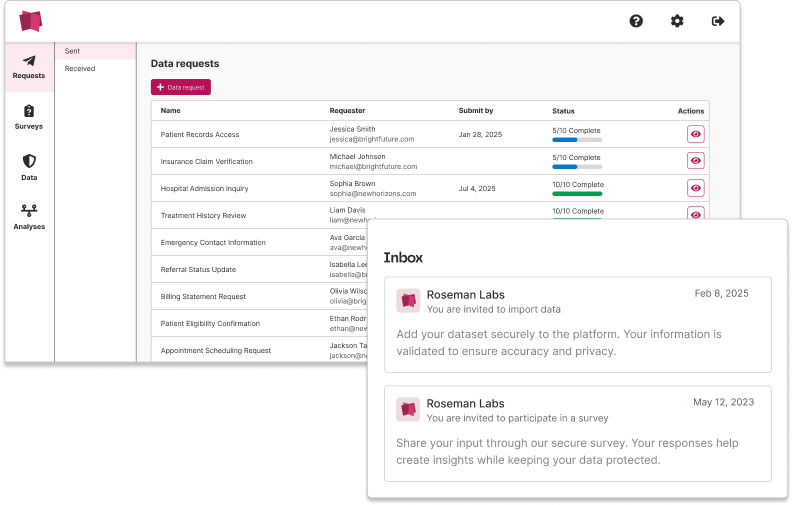
Encrypted computing
Our product
Zero-trust architecture with Multi-Party Computation. Your data is always encrypted. Only analysis results are revealed, never your data.
Deployed on EU-based clouds to meet data residency and sovereignty requirements (GDPR).
Enjoy the ease of 50+ ready to use functionalities, ranging from basic operations to machine learning & regular expressions.
Software-based. Run on commodity CPUs. No GPUs, HSMs or custom chips required - scale horizontally as needed.
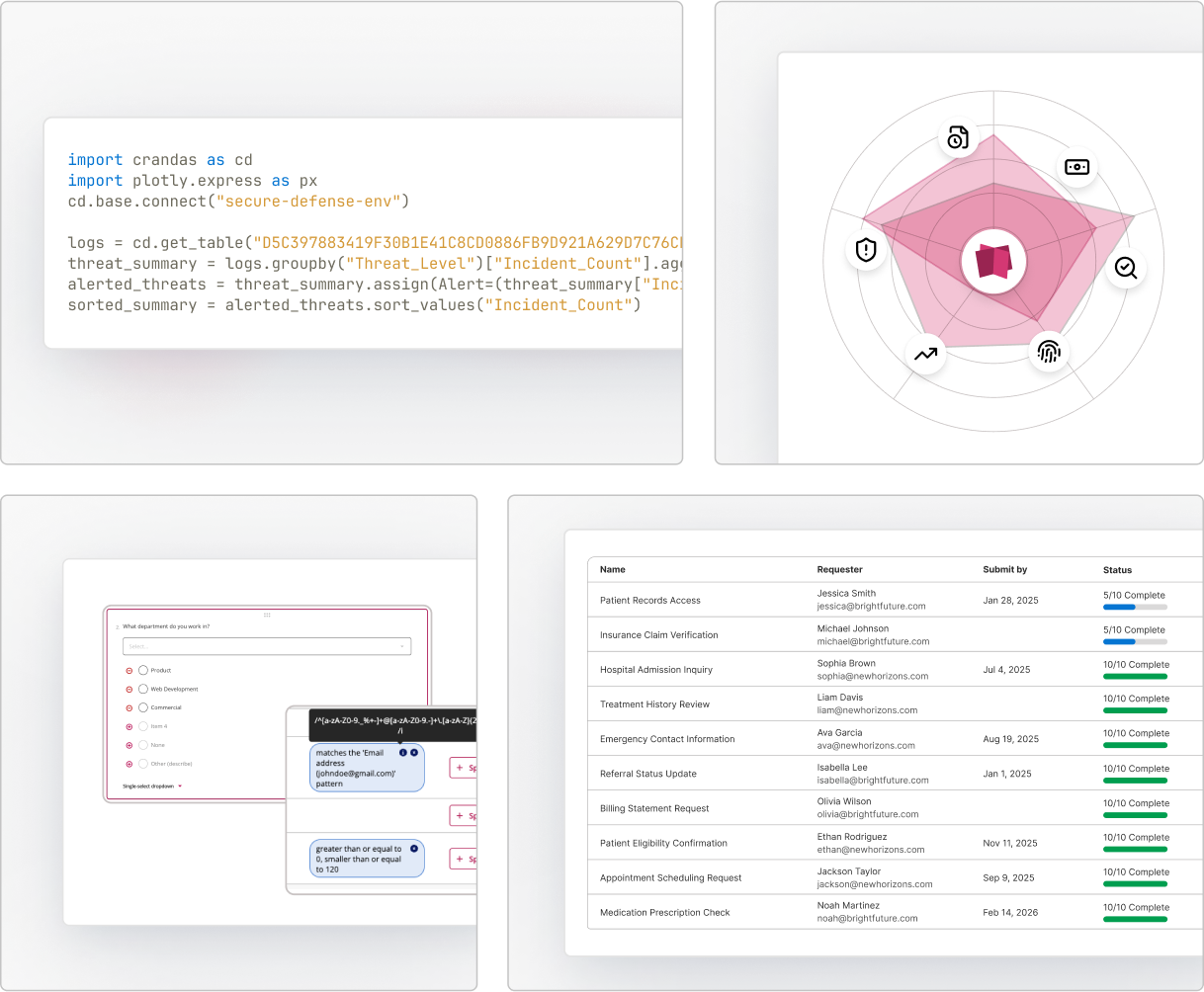
An easy, scalable and
trusted product.
European cloud servers
Deploy in EU-only cloud environments or fully self-hosted. Meet the strictest sovereignty and compliance requirements with full control over your data.
Approval flows
Define exactly which computations can run on which datasets. Without explicit approval, analyses cannot be executed, ensuring maximum security.
Flexible analysis
Build your own analyses in standard Python. Use our Python package crandas to unlock limitless analytical possibilities, without compromising privacy.
Easy to use
Built for data scientists, engineers, and project managers alike. Roseman Labs makes advanced analysis accessible to every role, so teams can achieve their goals together.
Interoperable
Integrate seamlessly into your existing technology stack. Use our API to enhance and extend current workflows without disruption.
Audit & traceability
Every action is logged and verifiable. Maintain a full audit trail for compliance, oversight, and peace of mind.
Discover
the platform.
Click below to get a walk through.
Not sure if our product is a fit for you?
Cryptographically secure &
post-quantum ready.
Platform
Supercharge your
tech stack
Ready to boost your data's power? We make it happen with open standards and a focus on broad interoperability, so your systems always work together effortlessly.
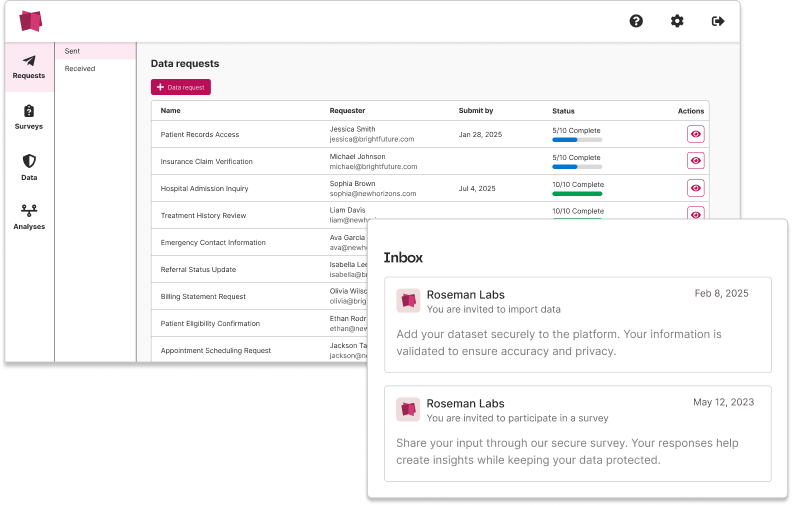
Encrypted computing
How it works
Split and protect - Each dataset is split into encrypted shares and distributed across independent servers. A single server sees only random numbers.
Compute collaboratively - Analyses run jointly on the shares, using verified cryptography. The raw data is never reconstructed.
Reveal results only - When an analysis is approved, the platform reveals only the final outputs (tables, charts, model scores) you permitted.
No single party ever sees the full data - not partners, not us.
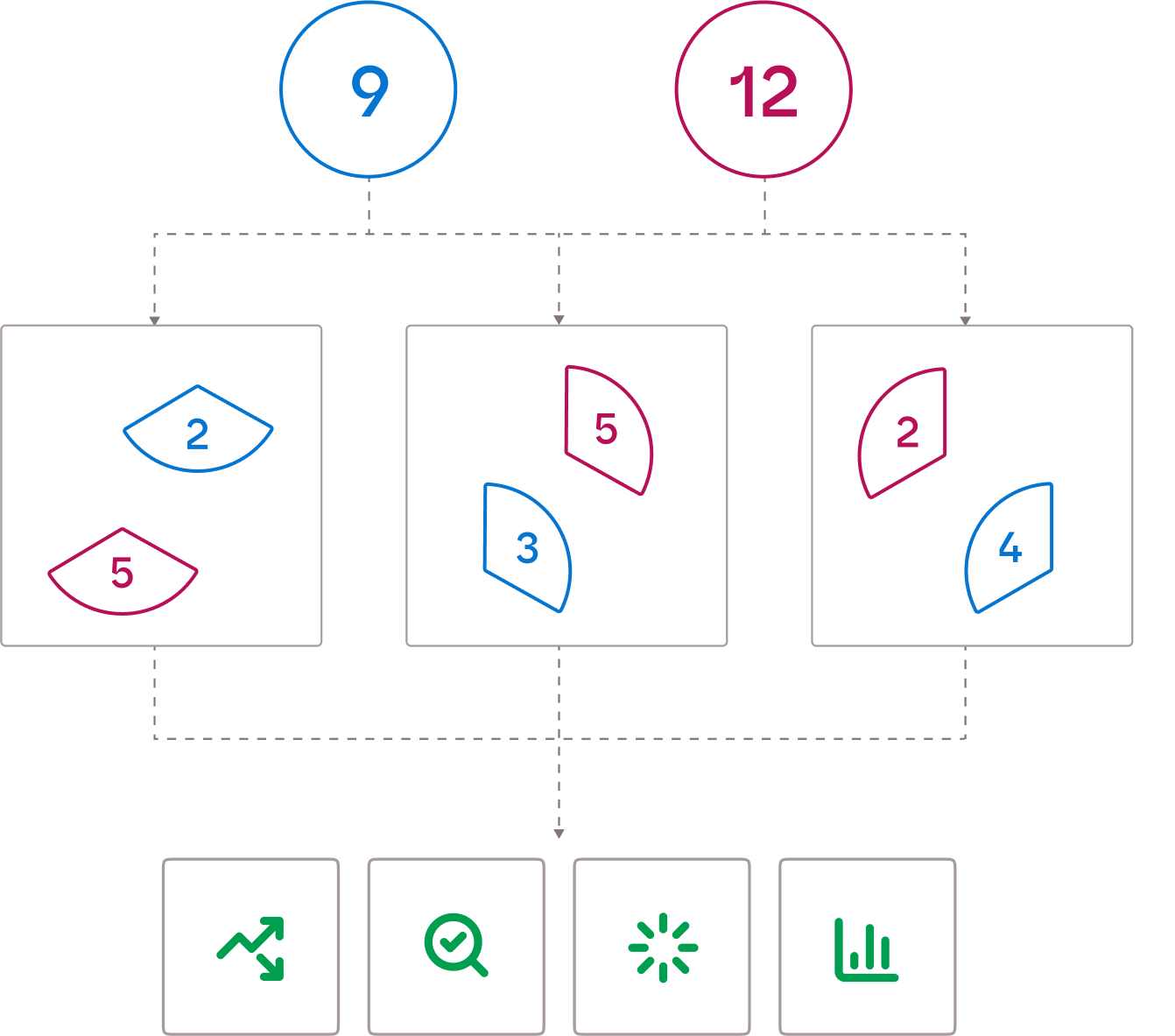
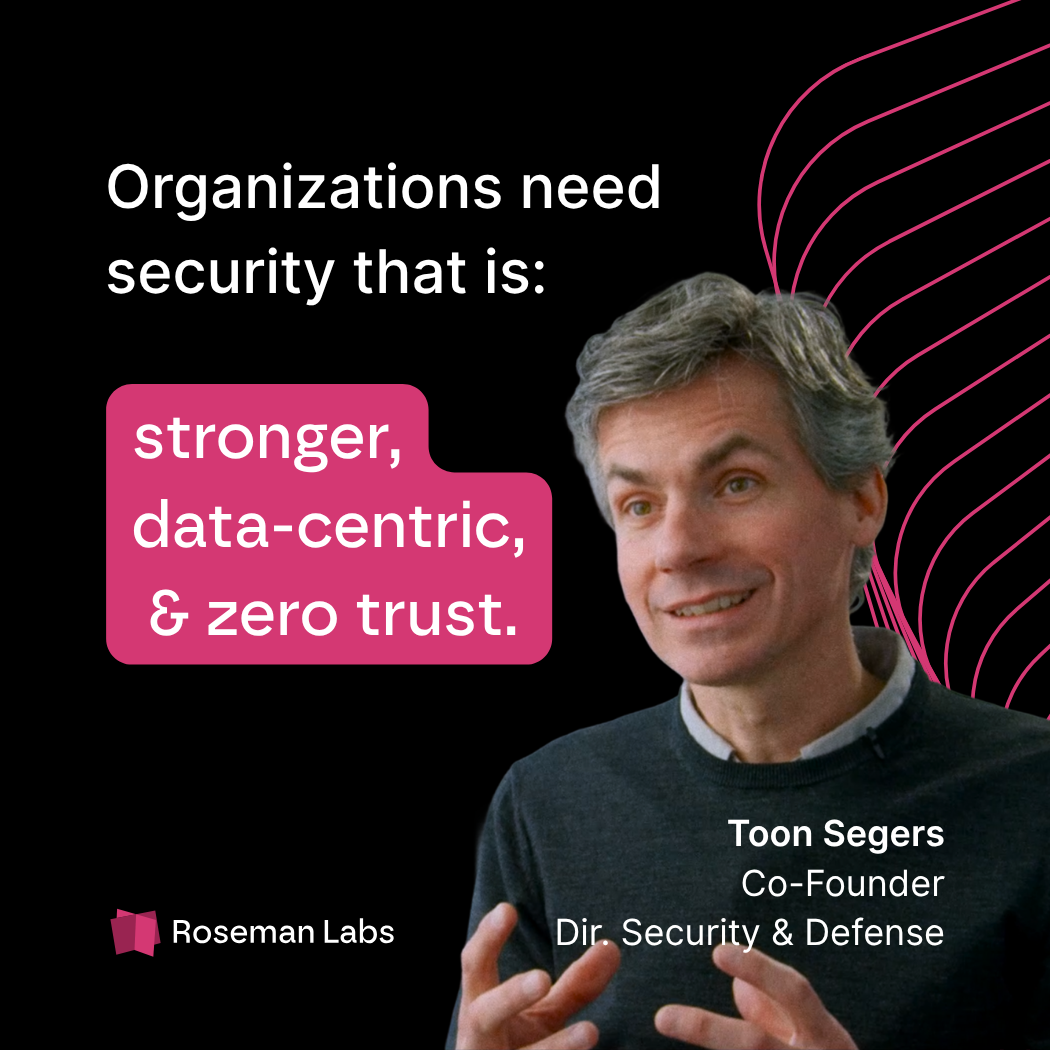
Take the next steps
with Roseman Labs.
Product FAQs
-
How is the Roseman Labs software deployed?
Our software can be deployed in the cloud or on-premise. While most customers choose a cloud deployment, we also provide self-hosted options for those who prefer to run the solution in their own environment.
-
What Cloud providers does Roseman Labs work with?
We operate using three independent, trusted cloud providers. Each hosts one MPC node so that no single provider ever has access to the complete data.
For production environments we work with Cyso Cloud, OVH, and Scaleway. For demo environments, we use AWS for simplicity.
-
Does Roseman Labs offer built-in security and governance?
Yes. Security and governance are central to our product.
Our software is built on secure Multi-Party Computation (MPC), which ensures that no single party ever has access to complete sensitive data. Each cloud provider is independently administered, ensuring segregation of duties. Within the platform, governance is managed through fine-grained roles and permissions on the user management page. In addition, approval flows guarantee that only analyses explicitly approved by environment approvers can be executed on sensitive data. Users first design analyses on dummy data, and only after approval can these be run on the encrypted production data.
In addition, each cloud provider is independently administered, ensuring segregation of duties.
-
Does Roseman Labs provide built-in dashboards?
Roseman Labs provides secure processing of encrypted data rather than visualization. However, outputs can easily be exported as pandas dataframes and integrated with tools such as Databricks, PowerBI, Tableau, or Elastic to create dashboards. We also offer a selection of no-code templates that enable you to run common analyses and generate basic visuals directly.
-
What Machine Learning capabilities does Roseman Labs offer?
Our engine supports a wide range of machine learning methods, including:- Descriptive statistics
- Binomial logistic regression
- Multinomial logistic regression
- Ordinal logistic regression
- Linear regression
- K-nearest neighbors
- Random forest classification
For more details, please visit docs.rosemanlabs.com. -
How do I write a script in Roseman Labs?
You can connect to a Roseman Labs deployment directly from a Python environment. This enables you to design and run analyses on 'dummy data', and once approved, execute them securely on encrypted production data. See our Getting Started guide for details.
-
Where can I find more FAQs?
For additional questions about the product, visit our general FAQ on our Help Center.
Encrypted data spaces
Take the lead in generating collective intelligence across digital boundaries, so you can act fast on today’s most critical challenges.
